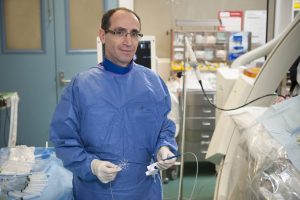
Professor Jonathan Kalman
Radiofrequency ablation for atrial fibrillation (AF) can be performed with a low complication rate, according to a review of cases at the Royal Melbourne Hospital.
The review of 2,255 initial and 495 redo procedures between 2004 and 2017 identified 23 major and 20 minor complications.
The rates of complications – 0.84% and 0.73% respectively – match the lowest reported in other series and compare favorably to other rates as high as 9.1%.
Major complications included five cases of cardiac tamponade, two cases of gastroparesis, three oesophageal and two retroperitoneal haematomas.
There were no deaths or myocardial infarctions and one case of cerebral artery stroke but with no major permanent disability.
Lead author Professor Jonathon Kalman told the limbic the study confirmed other data that female gender was a predictor of complications.
“It is however a minor increment against a background of low risk.”
Patients older than 70 years were at no higher risk of experiencing complications.